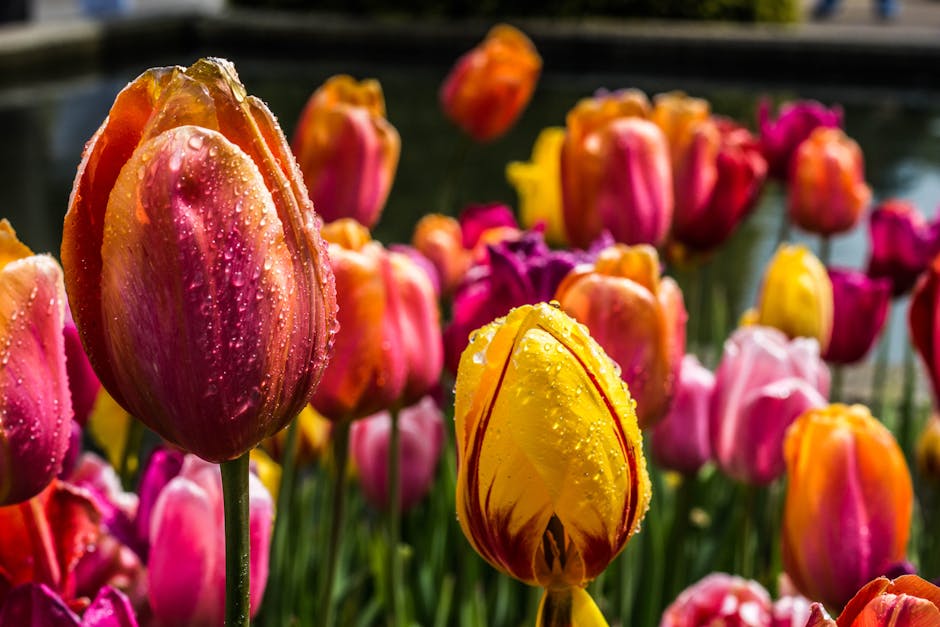SnugNiture 3 Pcs 2x2x1ft Round Galvanized Raised Garden Bed Kit Outdoor, Metal Planter Box for Planting Plants Vegetables, White
$59.99 (as of 13:39 GMT -05:00 - More info)VEVOR 3 Pcs 2x2x1ft Round Galvanized Raised Garden Bed Kit, Outdoor Metal Raised Beds for Gardening Vegetables, Easy Assembly Garden Planter Box for Flowers Fruits with Open Base
$40.99 (as of 13:51 GMT -05:00 - More info)There are some spring flowers that bloom before tulips but tulips are oftentimes seen as a harbinger of spring. They’re one of the consistent blossoms that we see in people’s gardens and one of the first ones that we enjoy a multitude of colors from.
 Tulips are usually something that a gardener thinks about in the
Tulips are usually something that a gardener thinks about in the
fall because we plant the bulbs in the fall. We let them sit outside in the garden through the winter months and receive a chill so that the bulb will set its blossoms on each stock and then all we have to do is is really watch them bloom in the springtime.
Once they have finished blooming and the flowers are beginning
to show their signs of aging some gardeners will take off the blossoms so that the plant doesn’t put its energy into producing seed and it’ll help that bulb to grow bigger for blossoms next year. It will also help the bulb multiply so that we end up with more than one plant of each variety that we’ve planted.
So if you’re interested in growing tulips in your garden you may
find someone who has had multiples grow in their garden and see if they’re willing to share with you or look for them in the fall and plant in preparation for next year’s spring. The green tissue continues to photosynthesize and help that bulb store up energy.
So you want to leave the foliage on the plant as long as possible but once we get some heat, the leaves will begin to shrivel up and once they’ve died down or browned then you can cut off the foliage and that plant will store up all of its energy in the bulb to produce large big flowers the following year as well as multiplying. The idea is to leave the foliage on the plant as long as possible, but once we get some heat, the leaves will begin to shrivel up and once they’ve died down or browned, then you can cut off the foliage. This will store up all of the energy in the bulb to produce large, big flowers the following year as well as multiplying.
If you’re looking for a way to add a variety of interest in your garden you can add tulips to add variety of color and heights into your garden in the spring season and bring that color back to the garden that’s been so gray over the winter months.
Related Content
- Waste Warriors: Student Coalition Awarded $48000 to Re-Imagine School Food Trash
- This New Way Of Growing Veggies Changes EVERYTHING! Pests, Diseases Are GONE!
- Hopkins has a responsibility to act sustainably
- Bin there, done that: NYC set to reinstate curbside compost collection
- Town of Smithtown Is Again Offering Free Bagged Mulch












































